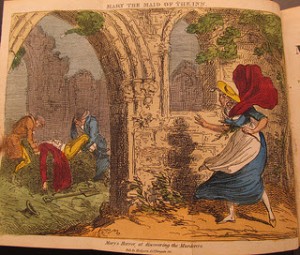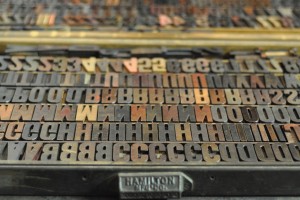So, you like the smell of ink and old paper? You love strange tales? Maybe you’re into the exotic locales they can take you to? Or maybe you like to do weird digital things with printed matter?
Yeah, I’m talking to you. No need to blush or look away. We got what you need right here: three different options this Intersession for gettin’ down in Special Collections.
 Introduction to Special Collections (AS.360.104.12), January 6-17. This class will focus on travel narratives, specifically stories about and accounts by women travelers from the West going to Asia and the Middle East. Enjoy some fine armchair travel through the exciting adventures of women explorers like Emily Eden and Isabella Bird, examine the cultural contexts that shape their narratives, and learn how to map their journeys with a user-generated digital archive. Plus, make a real-world difference by writing Wikipedia articles about the women travelers you learn about. Questions?
Introduction to Special Collections (AS.360.104.12), January 6-17. This class will focus on travel narratives, specifically stories about and accounts by women travelers from the West going to Asia and the Middle East. Enjoy some fine armchair travel through the exciting adventures of women explorers like Emily Eden and Isabella Bird, examine the cultural contexts that shape their narratives, and learn how to map their journeys with a user-generated digital archive. Plus, make a real-world difference by writing Wikipedia articles about the women travelers you learn about. Questions?
Focus on Special Collections: Chapbooks  (AS.360.107.13), January 6-24. Chapbooks were cheaply produced booklets meant to provide boundless entertainment and instruction to their readers at the bargain basement price of a few pence. Considered by many as an example of people’s literature, the chapbooks contain murderous confessions from the gallows, bawdy humor, stories of feral women who naturally become nuns, and Napoleon’s tried and true theory of fortune telling. Students in the course will have hands-on access to our collection of chapbooks, serving as an introduction to the popular culture of the early nineteenth century! Questions?
(AS.360.107.13), January 6-24. Chapbooks were cheaply produced booklets meant to provide boundless entertainment and instruction to their readers at the bargain basement price of a few pence. Considered by many as an example of people’s literature, the chapbooks contain murderous confessions from the gallows, bawdy humor, stories of feral women who naturally become nuns, and Napoleon’s tried and true theory of fortune telling. Students in the course will have hands-on access to our collection of chapbooks, serving as an introduction to the popular culture of the early nineteenth century! Questions?
 The Art of the Press (AS.371.173.22), January 13-24. And where exactly do they come from, these peculiar objects we call books? Well, from baby books, of course! Actually, it turns out that the creation of printed material involves a lot of hot metal, mysterious liquids, dextrous fingers, and vanishing expertise. You wanna be initiated? This class will cover the basic history and practice of letterpress printing. We’ll study printing techniques and different kinds of typography (display type, for example) through materials at the Peabody Library—and spend several days learning how to print at MICA’s letterpress studio. Questions?
The Art of the Press (AS.371.173.22), January 13-24. And where exactly do they come from, these peculiar objects we call books? Well, from baby books, of course! Actually, it turns out that the creation of printed material involves a lot of hot metal, mysterious liquids, dextrous fingers, and vanishing expertise. You wanna be initiated? This class will cover the basic history and practice of letterpress printing. We’ll study printing techniques and different kinds of typography (display type, for example) through materials at the Peabody Library—and spend several days learning how to print at MICA’s letterpress studio. Questions?
